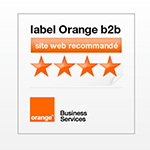
Let us start with a little quiz: What is the most crucial aspect of your business / organization? Which aspect of your business / organization is hardly predictable, fast forward moving, unreliable, hyper-connected? The answer to both questions is: your customer. Let face it, the way the social web is transforming the consumer’s world at warp speed will have deep impact on every aspect of the way we are doing business.
Adapting to this new world means that companies’ most important assets are no more the products or services they create, manufacture, produce, sell, but their customers, and the way they want, buy, use and herald their products. This might not be new, would you say, as almost a century of consumerism has accustomed businesses to consider sales as their most fundamental activity… Which has also accustomed them to ignore a whole world of actionable activities, involving loyalty, advocacy, recommendations, use scenarios and user experiences. The problem is that this world has become prevalent, and that there is no way back. Ignoring this change is paradoxically putting the customer in total control of brands, and might prove lethal for many businesses.
Albeit being a step in the right direction, internal use of the same tools which enable the social web will not save organizations from a radical change in the way they do business. Heading toward Enterprise 2.0 for the sake of efficiency is a lure, as long as collaboration is not designed toward, and with, the customer.
Brands Need to Be Social, Commodities Not
But, as I recently wrote, not every business is meant to become social. Involving your customers requires that… they want to. The mass consumption era leaded to an overwhelming number of brands whose mainspring relied on two main wills: capturing shares of ever-expanding markets, and creating new needs to fulfill. Entering any store presents us today with at least half a dozen products for each category, products whose only intrinsic differences often lie in price and marketing claims, competing with each other. Consumers do not want to discuss about everything they buy. They want to be part of products and services which help them getting a better experience in their conscious, voluntary and meaningful activities. This means that ‘the rest’, entire categories of products and services, are considered as commodities, unless they are able to bring enough innovation to level up customers’ experience to a really different and meaningful experience. In that logic, most brands are just reminders of who is the cheapest, whose wrapping are the easiest to tear off, etc. For those, being ‘social’ means nothing but leveraging customer service (which is often a giant step anyway). Commodities do not need to be ‘social’, they aren’t even intended to.
It is not innocent that travel and tourism businesses, which operate in a service-dominant logic, already began undergoing such a change more than a dozen years ago; customers demand helped segmenting the market in two opposite directions, custom-tailored high-end services and standardized mass products. The actual, and fundamental, difference in today’s ‘social’ evolution is that customers are pushing the envelope further. Not only do they want to be listened by your brands, but they want to share their insights, so you can co-create with them the best product or service ever (according to them, of course, but aren’t they the only ones who matter?).
Beyond Value in Use, Value in Expectation
Traditional branding focuses on brands’ perception and alignment with actual product or service, thus focalizing on the act of purchase, while service dominant logic focuses on value in use during the whole product or service lifecycle. Unfortunately, this leaves aside most of customer’s interaction before any transaction takes place. While customers’ expectations might be considered as part of the global user’s experience, it would be much more useful to isolate ‘value in expectation’ to try to better understand the fuzzy border between brand and commodity from a customer’s point of view.
Wim Rampen (@wimrampen) pointed me the other day to a really interesting research on Reference scales of service quality and satisfaction judgments in restaurants. One of the important findings of conducted studies is that the tolerance range in which customers consider the delivered service as acceptable / desirable is much narrower when the restaurant is branded, while uncommitted (neutral) customers are much more prone to react. Consider those marketing implications:
- Customers expect a definite level of service, which I call Value in expectation. Although defined by brands promises and by peer recommendation, this value is set by potential customers, and branding’s new role and responsibility is to align their actual service delivery to customers’ expectation. Value in expectation is the new brand equity.
- Customers don’t necessarily expect more from brands. But they expect brands to deliver more accordingly to their expectations. Truth matters more than claims.
- Enhancing your service is useless if your customers don’t expect it, they will become uncommitted. Value in expectation will only be raised jointly by customers and brands. This also means that engagement through social media is useless unless actual customer experience expects it. Facts trump conversation.
Value in expectation is what brings together brands and customers. Value in use is what keeps them together.






Thanks for the blog article.Thanks Again. Really Great.
Thierry. I’ve been culling my papers and files this past week and finally have gotten around to making the comment to this post. I found it so intriguing. I hope this isn’t too much of a stretch, but your description reminded me of what we see of the apostles and the network of house churches they began and nourished during the first and second centuries of the Christian church. The traveling apostles– Paul and his group, Peter with John Mark, John and his crew– seems to me to have been organization-less. Not that they were unorganized, but their missionaries traveled separately, although sometime intersected and supplied their start-up groups with teaching, nominating indigenous leaders, advice, etc. That was my thinking.
Then in thumbing thru a pile of magazines I came across an article in the November-December 2006 issue of “Mission Frontiers.” Dan Sinclair and Dick Scroggins suggests instead of traditional missionary agencies have ASPs instead. ASP: “Apostolic Service Providers.” These ASPs would focus on one or two ministries, such as team formation, financial administration, training. These would be nodes and linked together would form the ApNet, a “global apostolic network.”
The world has changed they say. Having hundreds of people working together in collective solidarity has changed from an advantage to a disadvantage. They note that “this flattening of the apostolic enterprise reflect what is happening elsewhere in human enterprise.” I just had to drop this off to you. Maybe there is a return to small house churches/groups networked together; just brand and customer, gospel and saints (?) (I don’t know what the terminology would be.)
One more comment: Gant shirts and Kenmore appliances. Both may fit the model of brand and consumer. As I recall reading a decade ago Gant ceased being a shirt manufacturer and but kept the brand and designers. Shirt designs (blueprints?) were then given to Asian factories and the Gant shirts marketed to department stores. On the other hand Sears had long marketed its Kenmore appliances, but the appliances themselves were manufactured by a number of firms, Whirlpool, Frigidaire, Bendix (?), or whatever the appliance manufactures are.
” What is the most crucial aspect of your business / organization? Which aspect of your business / organization is hardly predictable, fast forward moving, unreliable, hyper-connected? The answer to both questions is: your customer. Let face it, the way the social web is transforming the consumer’s world at warp speed will have deep impact on every aspect of the way we are doing business. ”
Oh so that’s why there’s always a saying ” customers are always right “. But come to think of it, they are not always right. Yes, we conduct business because we need them but I always find this saying abusing to those who’s got business. Let’s just keep a good bargain.